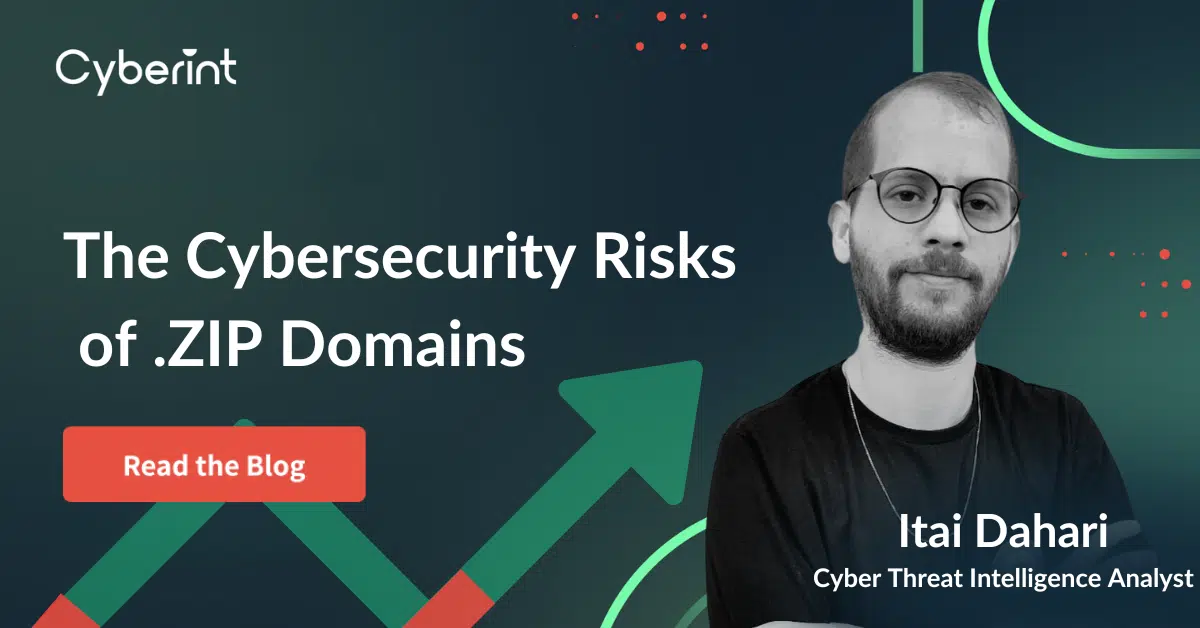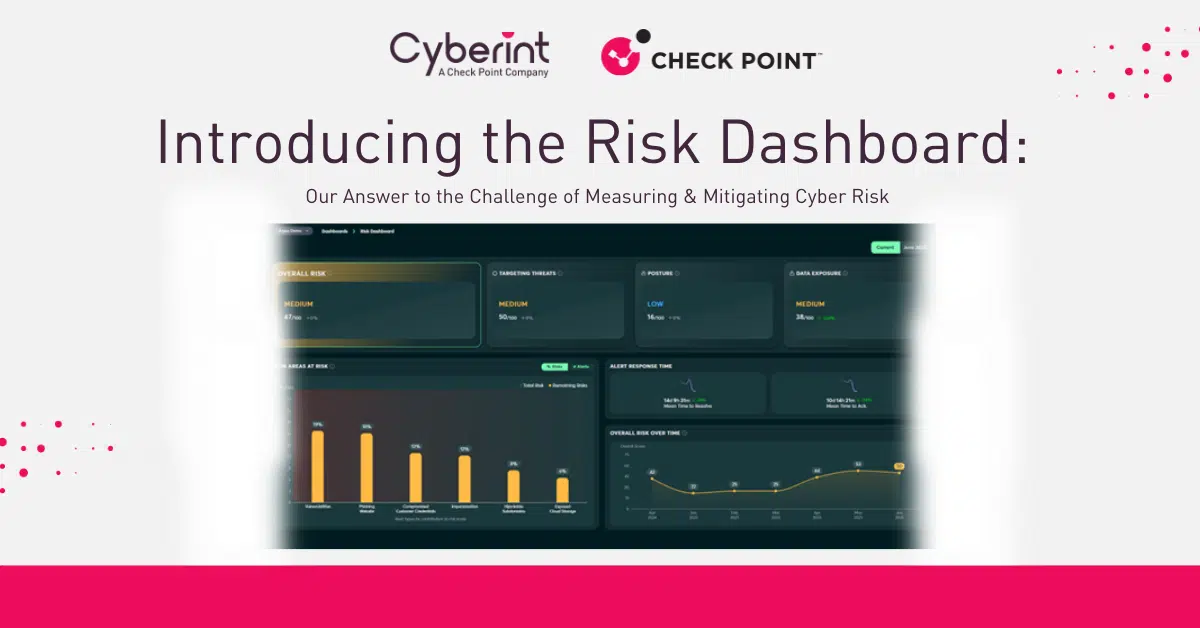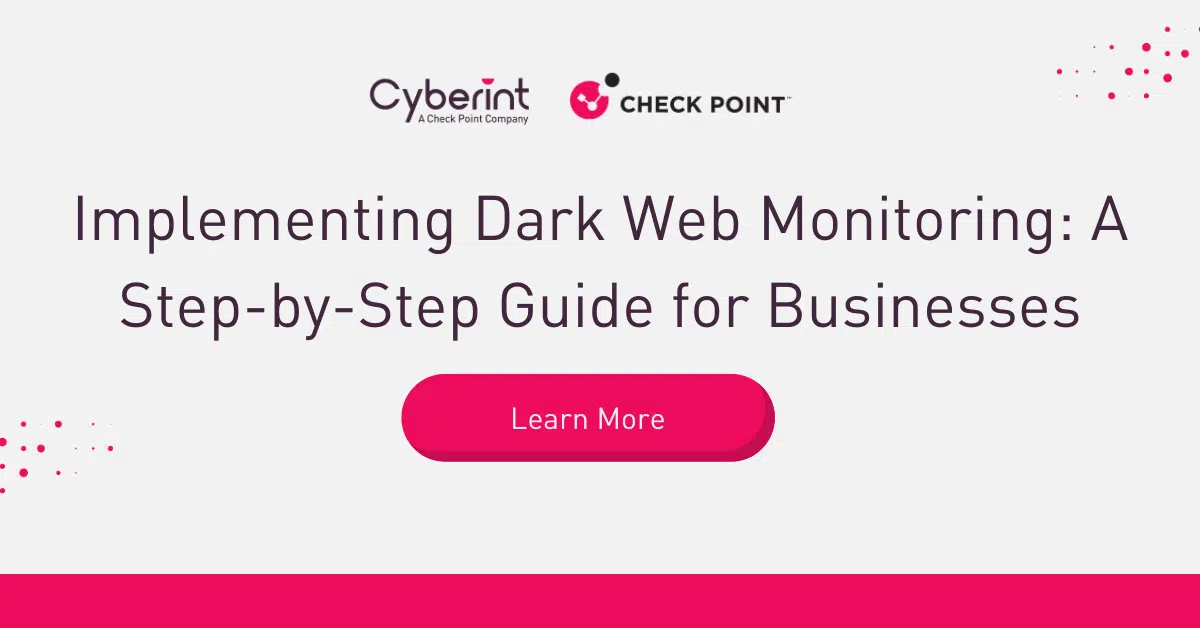



Itai Dahari is a cybersecurity professional residing in Tel Aviv. Itai's journey with various roles and positions has led him to launch a career in the cybersecurity realm. Alongside his role as a CTI Analyst on Anastasia Plotkin’s Americas Team at Cyberint, he finds joy in music and sports.
Google’s recent introduction of ZIP top-level domain (TLD) addresses, although well intentioned has ignited a heated debate surrounding the potential cybersecurity risks associated with these domains.
On the one hand, the move could make it easier for users to share and download files. For example, a website with the domain name “myfiles.zip” would be easier to remember than a long, complex string of numbers and letters.
On the other hand, critics worry that the use of ZIP Top Level Domain addresses could be used by threat actors to trick users into visiting malicious websites. One concern is that malicious actors could send phishing emails or create deceptive websites with ZIP Top Level Domains, leading to potential data breaches, identity theft, or other harmful cyber-attacks. For example, an email with a link to a website called “bankstatement.zip” might look like it came from a legitimate bank, but it could actually be a phishing scam.
Additionally, there are worries that traditional security measures and filters may need to be more effective in detecting and blocking threats from these new domains. Despite the convenience and user-friendly intentions behind Google’s decision, the cybersecurity risks associated with this change must be addressed. Researchers argue that proper precautions and enhanced security measures must be implemented to safeguard users and prevent potential breaches.
It’s crucial for Google and other stakeholders to closely monitor and address any emerging threats and vulnerabilities associated with adopting ZIP Top Level Domains, ensuring the protection of user data and overall online security. The ongoing debate highlights the importance of balancing innovation and usability with robust cybersecurity practices.
Recently, a new phishing toolkit called “File Archivers in the Browser” has emerged. It was created by a security researcher called mr.d0x, and is taking advantage of .ZIP domains to carry out fraudulent activities. This sophisticated toolkit cleverly presents counterfeit WinRAR and Windows File Explorer windows within the browser interface. It utilizes deceptive techniques deceiving unsuspecting users into launching malicious files unknowingly.
The toolkit creates a convincing illusion of an authentic file archiver software, like WinRAR, in the browser. This adds a layer of legitimacy to the phishing attempts, making them more likely to succeed.
In addition to the fake WinRAR interface, another variant of the phishing toolkit has been developed. This one features a fake Windows File Explorer interface in your browser. Although it’s still a work in progress, it adds another layer of deception to the phishing kit.

To make it seem more legitimate, the toolkit includes a deceptive security scan button. When users click it, they get a reassuring message that says the files are free from threats, aiming to give them a false sense of security.
This phishing toolkit poses a dual threat, as it can be used to steal credentials and deliver malware. For example, if a user double-clicks on a PDF file within the fake WinRAR window, they may be unknowingly redirected to a fraudulent page that asks for their login credentials.
The toolkit can also deliver malware by presenting a seemingly harmless PDF file for download. However, when the file is clicked, it actually initiates the download of an identically named .exe file. Because Windows does not display file extensions by default, users may perceive this as a harmless PDF file and execute the concealed executable.
Another concern is how Windows searches for files. If a file cannot be found locally, Windows will open the searched string within a browser. This mechanism can be abused by cybercriminals, who can register ZIP domains that mimic common file names. This tricks the operating system into opening malicious websites disguised as genuine ZIP archives displayed by WinRAR.
Other creative techniques can also be used to increase the effectiveness of this toolkit.
Thanks to mr.d0x, this sophisticated phishing toolkit’s emergence serves as a reminder of the vulnerability introduced by .ZIP domains, as domains can be exploited to create sophisticated phishing attacks, deliver malware, and steal credentials.

Microsoft is set to introduce native support for RAR, 7-Zip, and GZ archives in an upcoming version of Windows 11. This was announced at the Build 2023 conference. Native support for these archive formats will eliminate the need for third-party applications, providing improved performance and convenience for Windows users.
The support will be implemented using the open-source libarchive project, which suggests that other common archive formats may be supported in the future. The update will be gradually rolled out to Windows 11 users by the beginning of June 2023. It will be interesting to see how ZIP domain phishing evolves and changes after this new feature is implemented.
Given the potential security risks associated with ZIP domains, it’s important to approach them with caution. Be mindful when clicking on links or accessing websites with ZIP extensions, as they may lead to phishing attempts or malware downloads. Verify the legitimacy of the source before interacting with any ZIP-related content.
Phishing attacks often rely on deception and mimicry. Pay close attention to the authenticity of browser windows, especially when dealing with file archiver interfaces like WinRAR or Windows File Explorer. Look for any inconsistencies or suspicious elements that may indicate a phishing attempt.
Enable the display of file extensions on your operating system to have a clearer view of the file types you interact with. This can help you identify potentially malicious files disguised with misleading extensions, such as an executable file (.exe) disguised as a PDF.
Keep abreast of the latest security measures and best practices recommended by reputable cybersecurity sources. Regularly update your antivirus software, enable firewalls, and utilize anti-phishing tools to bolster your defenses against emerging threats.
Knowledge is a powerful defense against phishing attacks. Stay informed about the latest phishing techniques, common indicators, and preventive measures. Share this knowledge with your colleagues, friends, and family to collectively raise awareness and mitigate the risks associated with phishing attempts.
If you encounter any suspicious or potentially malicious websites, files, or emails, report them to the appropriate authorities or your organization’s IT department. Prompt reporting can help mitigate the impact of phishing attacks and contribute to the overall security of the online community.
Remember, staying vigilant and proactive about online security is essential to protecting yourself and your sensitive information from phishing attacks.
By following these recommendations and maintaining vigilancy, users can strengthen their defenses against phishing attempts and protect their sensitive information online.
Cyberint is constantly on the lookout for new malware threats, monitoring forums, marketplaces, and code repositories to detect and intercept them before they can be used by cybercriminals. We help our customers defend against these threats and take them down in time.

©1994–2025 Check Point Software Technologies Ltd. All rights reserved.
Copyright | Privacy Policy | Cookie Settings | Get the Latest News
Fill in your business email to start


